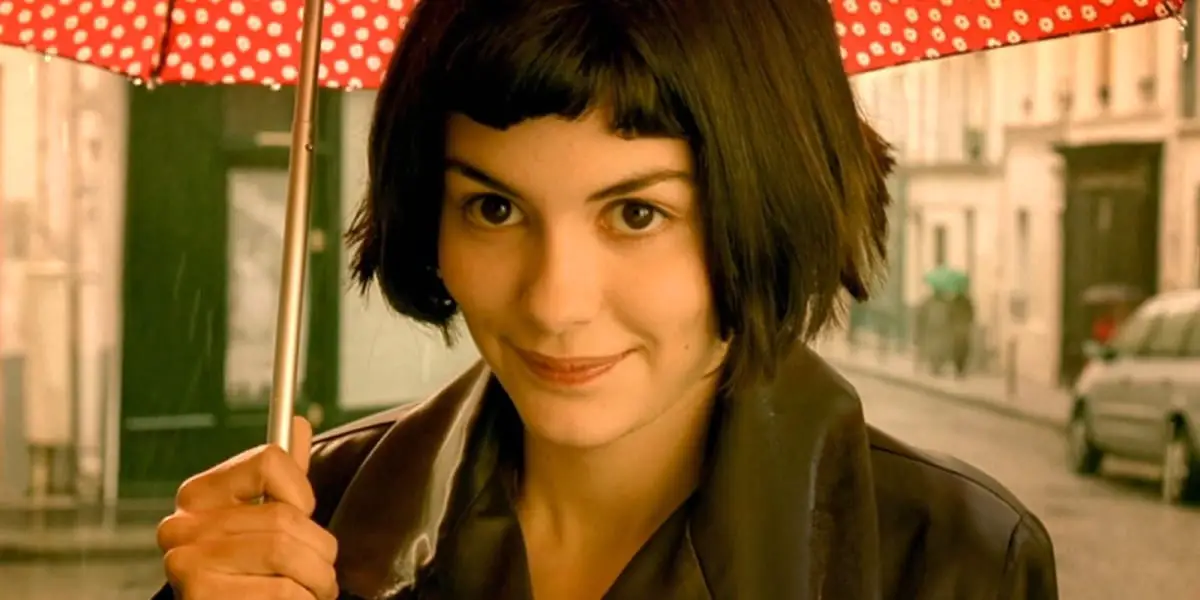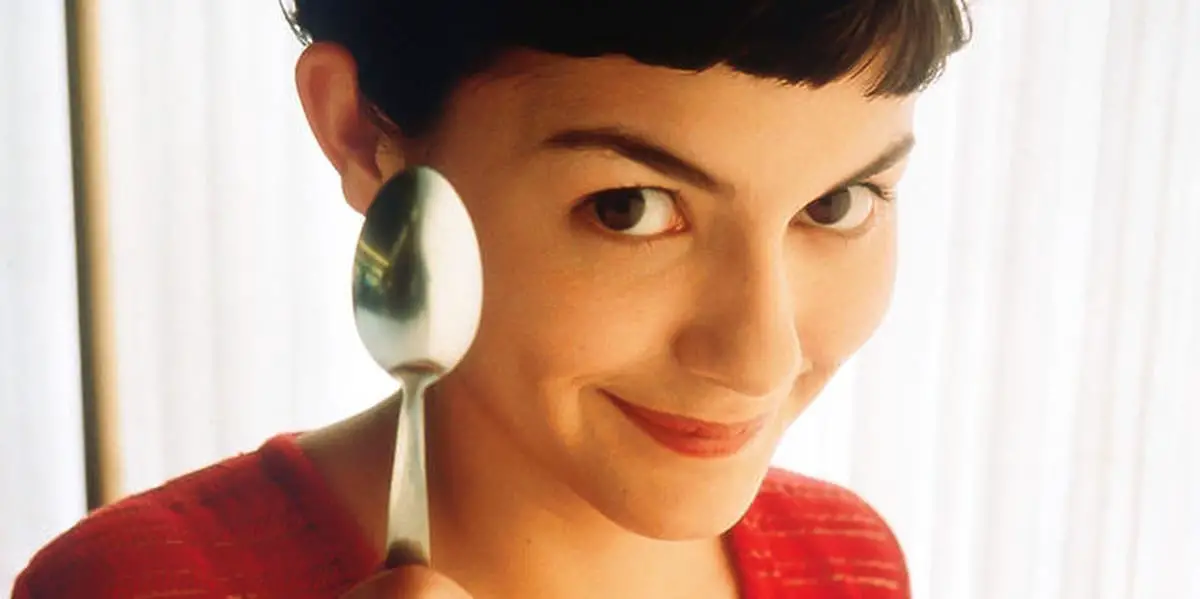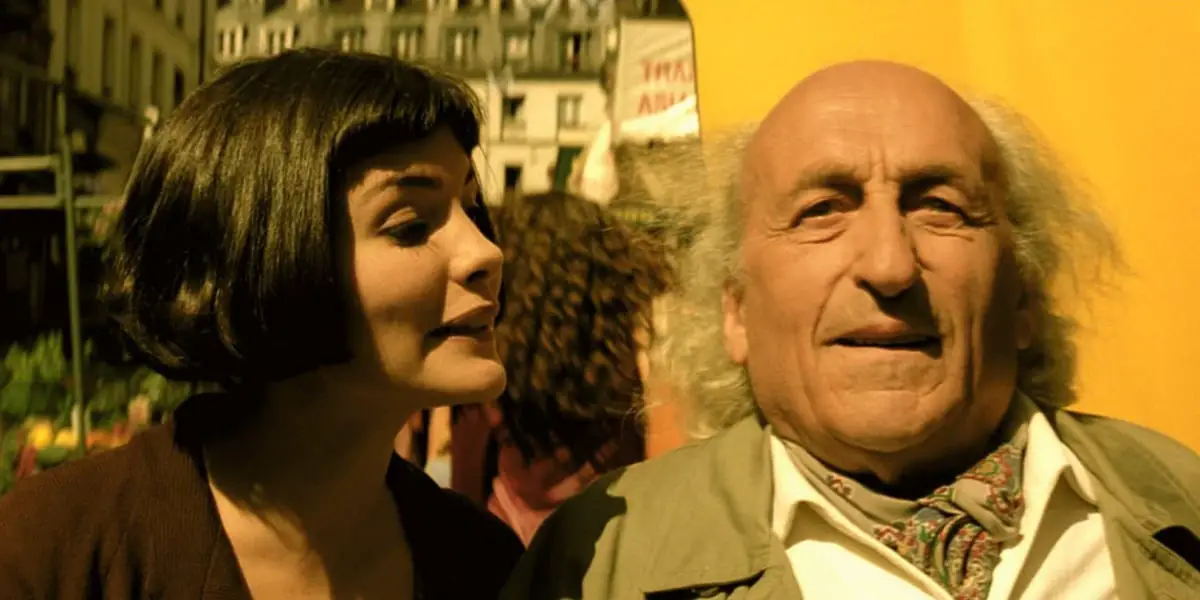Amélie is about a shy, lonely young woman of the same name (played by Audrey Tautou) that finds she loves brightening the lives of those around her, using extraordinary and even bizarre methods to do so. Amélie, mistakenly believed to have a heart condition as a child, was raised at home by her two parents. Her neurotic mother dies while Amélie is still a child thanks to a suicidal Canadian tourist, while her father is distant, growing only more withdrawn upon his wife’s death.
Amélie is unusual. Because she was so sheltered as a child, she made up imaginary friends and circumstances, developing a fantastical and mischievous personality as a result. That personality comes in handy as an adult each time she finds ways to change the lives of those around her for the better.

This French romantic comedy truly stands out, even to this day. Upon its release in 2001, audiences everywhere were enamored with the rom-com. Strangely enough, the plot doesn’t necessarily scream surprise or complex. It’s more simplistic in nature, and usually, audiences are bored with such a concept. Amélie isn’t a surprise, but it isn’t what you’d expect, either (especially with the creepy-looking movie poster which can be misleading). Keeping a balance between expectation and unpredictability is no easy feat, especially when the plot is facile and the characters are stereotypical, yet somehow contain a sense of unpredictability (especially where it concerns Amélie).
I always considered Amélie to be a good character. Fun, vivacious, full of life. She was waiting to be let out of the figurative cage she’d been held in most of her life. I appreciated the narrator because he offered many insights into her character and helped the audience get to know her better.
Amélie wanted to add something to the world, spread some love and happiness, and paint the black and white of the world with a wildly colorful brush. She manages to do all that and more, finding happiness not just for others but also for herself along the way, and that’s one of the many reasons why Amélie is so treasured.
Criticism
Every film comes with some criticism. People are different, hence different opinions. With a movie like Amélie, you either love it, or you hate it. There’s no in-between.
“Amélie is one of those films that never stops reassuring the audience that it’s on their side, taking them firmly by the hand and leading them…well, nowhere really,” writes Frédéric Bonnaud. He adds that the film abuses “in-your-face devices–like Amélie‘s heart beating under her sweater or any number of crazy, ostentatious camera stunts.”

Granted, sometimes Amélie can be a bit much. Whether or not people go along with the cartoon-like visuals that pop up every here and there is a matter of personal preference. I didn’t mind the visual of Amélie disappearing, melting and becoming water–it was a representation of how she felt. It resonates with me personally because sometimes, when you lose your chance, find yourself embarrassed, or something of the like, doesn’t everyone feel like melting at one point or another?
Other times, like the visual of her heart pounding in her chest, it seems unnecessary. You can tell by the look on Amélie’s face just how she feels, so the heart visual is over-the-top. It reminds me of that scene in Mary Poppins when Dick Van Dyke and Julie Andrews are dancing away with animated characters. It seemed like a touch much, not unlike Amélie’s heart.
Bonnaud also notes that “characters are heavily typed until they’re transformed into familiar figures”, like the “obnoxious merchant”, “the reclusive old painter”, etcetera. While these characters fall into their stereotypes, they each play a meaningful part of the story. They’re a representation of both fictional and real life. There are people out in the world that are a perfect example of conformity to a stereotype, be it spoiled rich girl, slacker skateboarder, dumb jock, or something along those lines. On the other hand, the characters are also a representation of how films see stereotypes, but I think Amelie found a balance in these stereotypical characters. They had just the right amount of stereotype about them without it being overly excessive, which made the inclusion of these characters like repugnant Mr. Collignon a complementary asset.
A Cinematography Observation
The scene where Amelie heads to Mr. Collignon’s mother’s house to inquire about the people that used to reside in her apartment is worth mentioning based on the cinematography alone. Amélie’s outfit matches the colors of the buildings and most of the surroundings as she walks up the street.
However, the lush green of the trees beyond the walls stand out, as does the blue Volkswagen Beetle. The Beetle was the first thing I noticed, the contrast of the blue to its surroundings so incredibly prominent I had to appreciate the scene that much more. I’m sure the Beetle’s placement is a nod to Germany, given the film was a co-production between Germany and France. I don’t know what it is about this scene, but I find it fascinating, invigorating and alluring.
Why Amélie Is So Beloved
I have two theories as to why the film has been loved since day one.
Firstly, it’s because the film depicts a young girl conducting kind acts for others out of a desire to make lives better and put some good out in the world. How many people, especially young people, would take time out of their hectic lives to help others the way Amélie does? How many take the time to notice the simple pleasures in life, like cracking crème brûlée with a spoon?

When it comes down to it, I think Amélie is a symbol of humanity at its best. She is a reminder that there are still caring and sympathetic people out in the world with good intentions. No matter where you are in the world, everyone has their days of despair when they think they’re only dealing with the worst of humanity. Amélie is a light, a symbol of hope and faith. She is a reminder that not all people are bad, hence giving audiences a good omen to believe in.
Not only that, but Amélie is also an inspiration. I don’t know about anyone else, but she makes me want to be a better person, to strive to be more like her. She gradually lets her walls down and becomes less afraid of the world, finding ways to enjoy more of it than she’s previously had the opportunity to. She makes me want to observe my surroundings with a clearer focus and to appreciate the little things like the five senses.
My second theory has to do with life itself. Gwladys Fouché notes that she loves the film because “Amélie offers a poetic and escapist vision of everyday life.” This is my favorite description of the film because it’s perfectly apt and a beautiful perspective to take away from the film.
Amélie is a waitress, living a relatively normal, everyday life. That can quickly become mundane. Amélie finds ways to create her own little thrills and surprises in life and finds true purpose and reward in helping others. When life becomes too mundane, that’s precisely what’s needed—a true purpose. You find something outside of your usual surroundings, go beyond your comfort zone and discover something new about yourself. Maybe there’s some risk, but the reward at the end is usually much greater. Meeting new people, doing new things, helping others–that’s what keeps life interesting and exciting, and it erases the mundane and allows you to spread true greatness, infusing it with the world. That possibility gives audiences hope and inspiration to change the mundane of their lives into their own little thrills.

My absolute favorite scene of the entire film is when Amélie walks with the blind man, quickly explaining to him everything she sees in vivid detail. She sounds hurried, but it’s because she’s so excited, and the man soaks everything in with wonder, fascination and a smile. She really does do him a kind service, and then just as quickly as she helped him, she’s gone, leaving him at the metro and bidding him farewell. Sharing the world with someone who cannot see or even enjoy it in the same way you can is something truly special, and one-of-a-kind.
I think that’s why Amélie is so popular. She’s one-of-a-kind. She’s relatable because she’s shy and lonely and uncertain, but she makes a choice to change all of that, and she manages to find love and happiness because of it. Being brave means doing what scares you, and Amélie overcame her fears and got back in the world when she’d been isolated from it most of her life.


I love your descriptions of the character in Amelie, one of my favorite films. 🙂
🙂